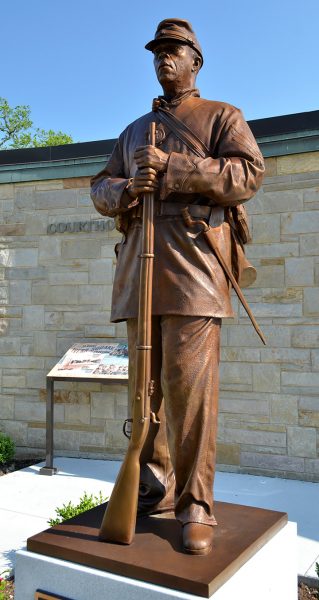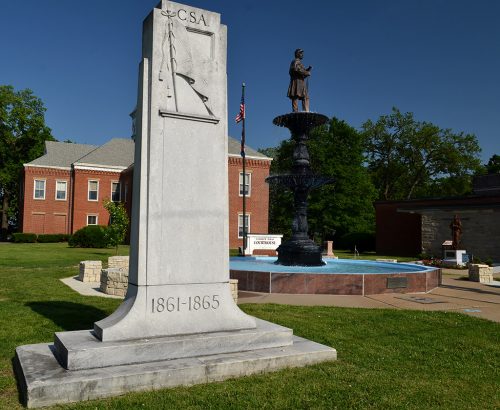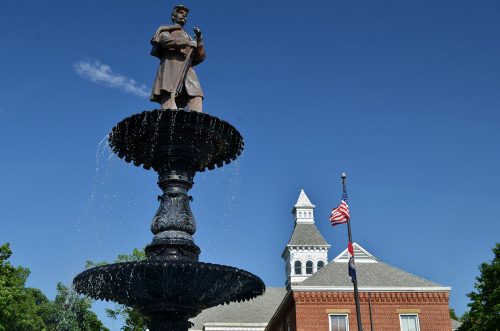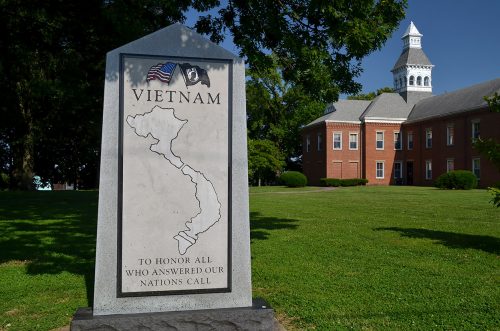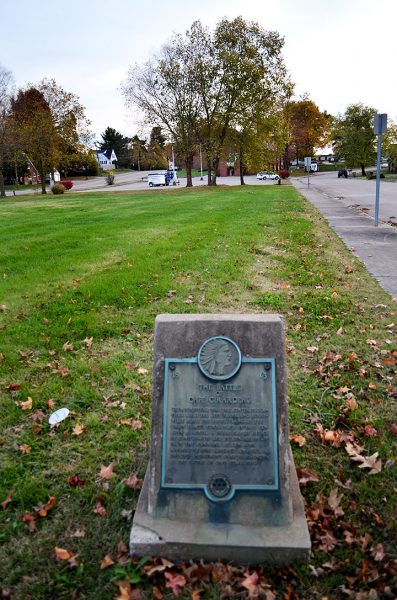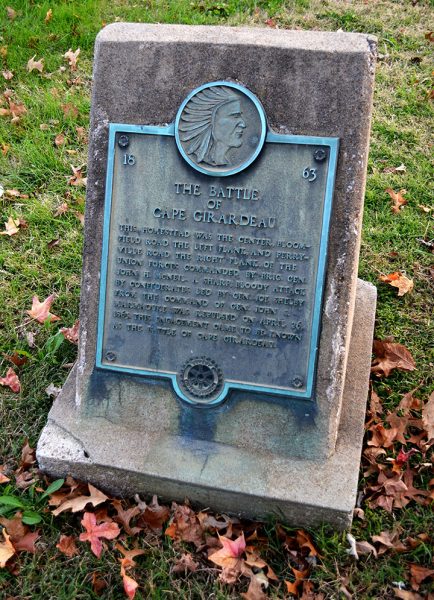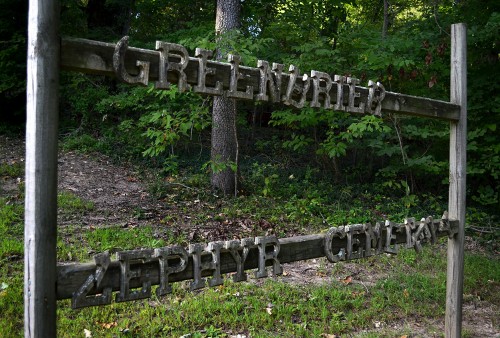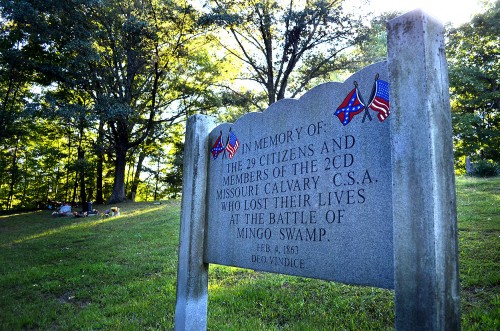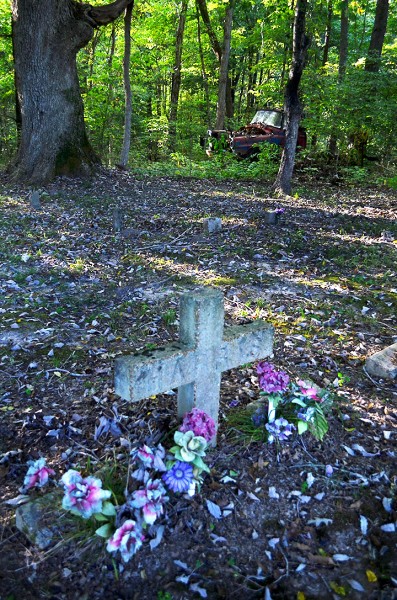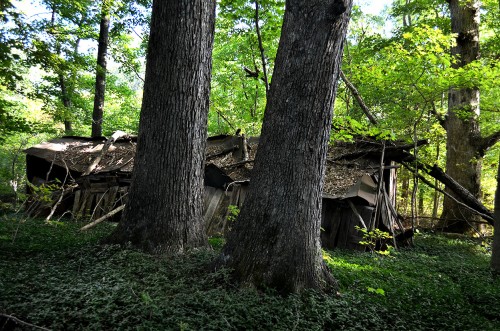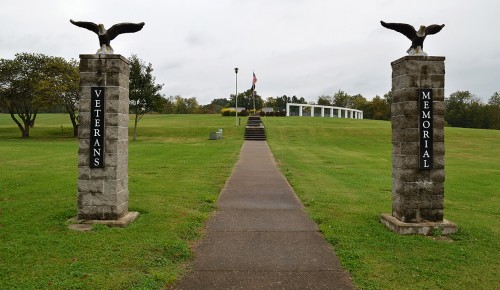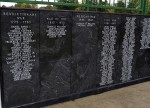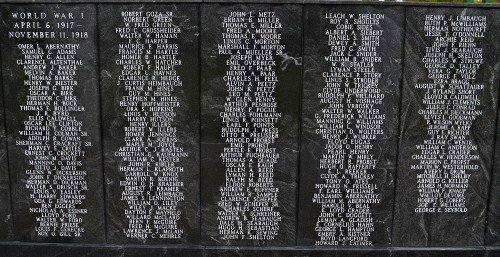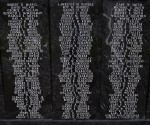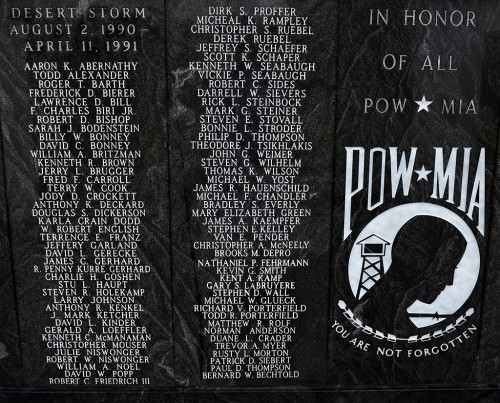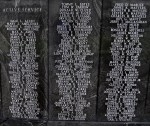This statue of a member of the United States Colored Troop regiments will be unveiled officially on June 8, 2019. It’s located on Ivers Square on the Common Pleas Courthouse grounds. Ironically, the statue is located in front of the old Carnegie Library, which is close to where slaves were auctioned off in Cape Girardeau.
The square is named for James Ivers, who was owned by E.W. Harris for 25 years, then was sold for $800 to a young up-and-comer John Ivers, Jr. John Ivers eventually bought James’ wife, Harriet, and the couple’s three children, Washington, Stella and Fanny.
In the spring of 1863, when official enlistment for men of color opened, James joined up and was sent to Helena, Arkansas. Before he saw action, he died of consumption in the fall of that year.
You can read more about James’ life in Denise Lincoln’s column in The Southeast Missourian.
A snapshot of Cape during the Civil War
This photo contains monuments to the Confederate States of America, a Union soldier, and the new statue recognizing the sacrifices made by troops of color.
The Common Pleas Courthouse served as the Union headquarters when the city was under martial law. A guerrilla who was being held in the dungeon basement of the building was lynched and hung.
Not the original soldier
This isn’t the Union soldier I photographed in 1967. A tree fell on it, and smashed it to more than 200 pieces in 2003. The pieces were painstakingly put back together and a new statue molded from them.
Here is a bit of the history of the statue.
Vietnam veterans recognized
This monument is in honor of service personnel who served in Vietnam. You can see some our classmates who didn’t return listed on the Freedom Corner in Capaha Park, along with servicemen from earlier World Wars.
- Gary Schemel, the first Central classmate casualty, died in 1965
- Bob Taylor, killed in 1968
Brookside War Memorial
If you are in Jackson, it’s worth stopping by the Brookside War Memorial.

